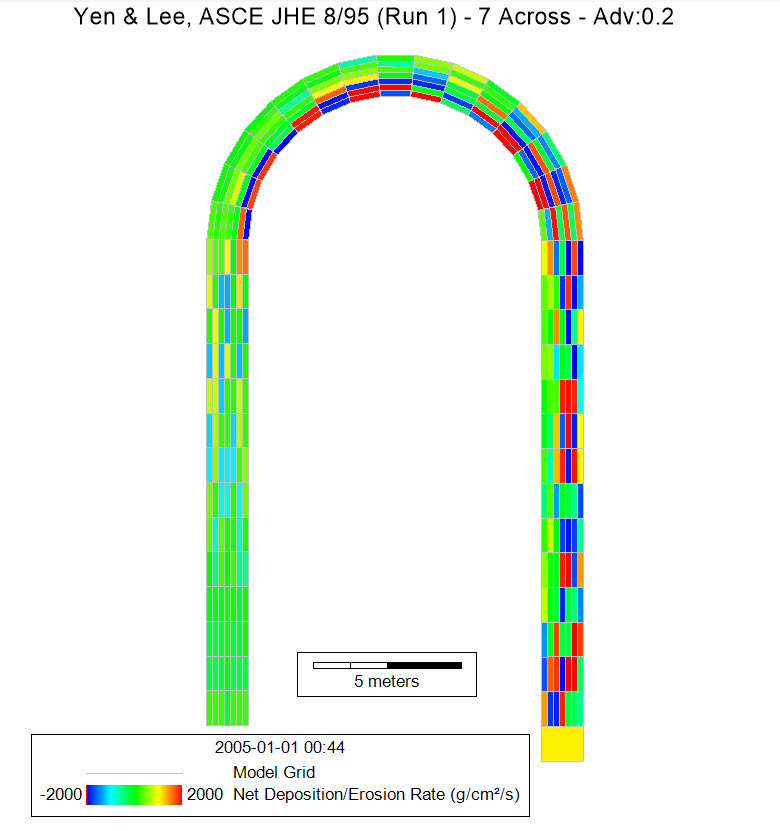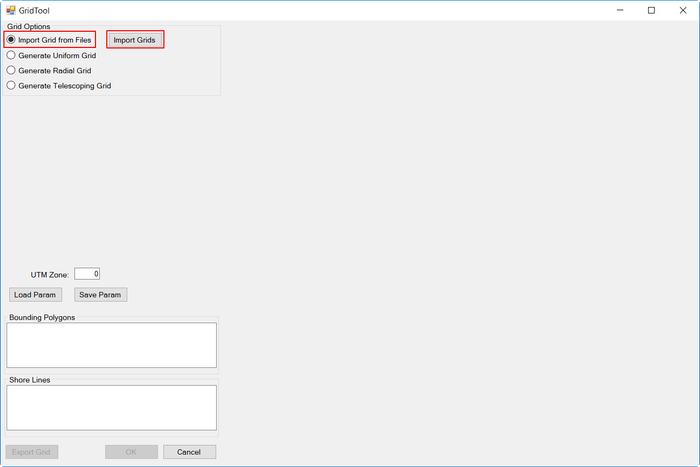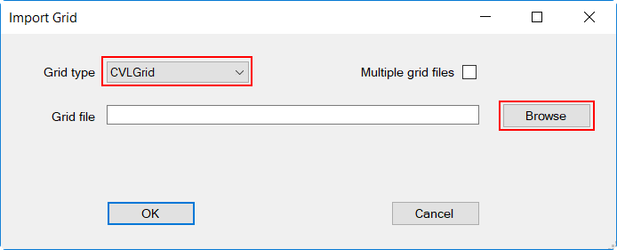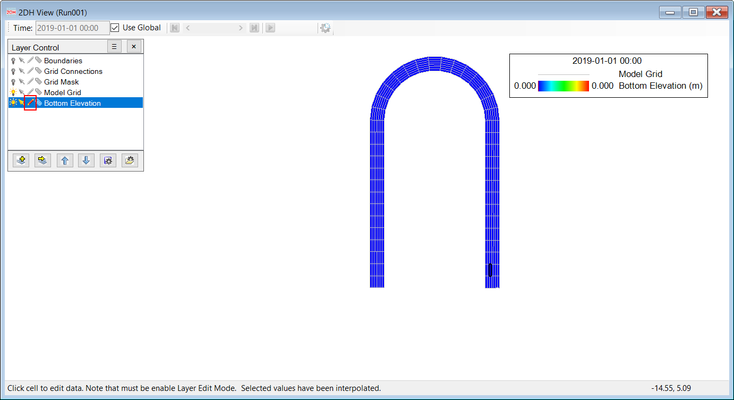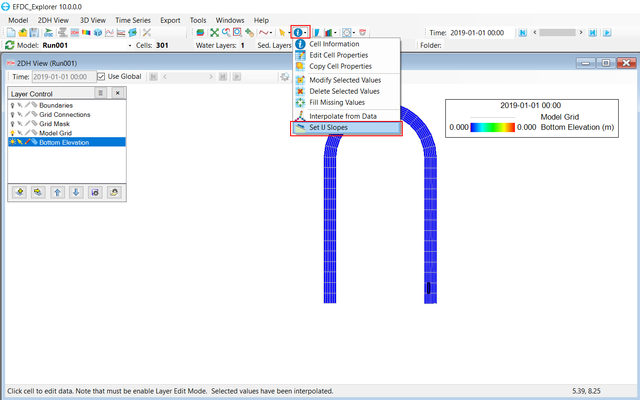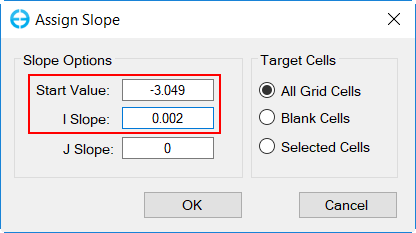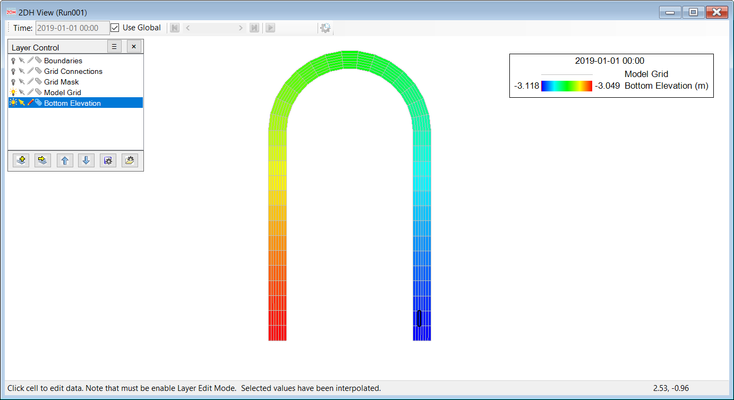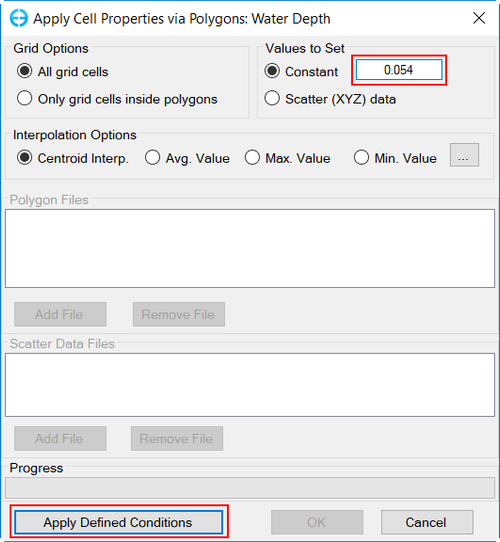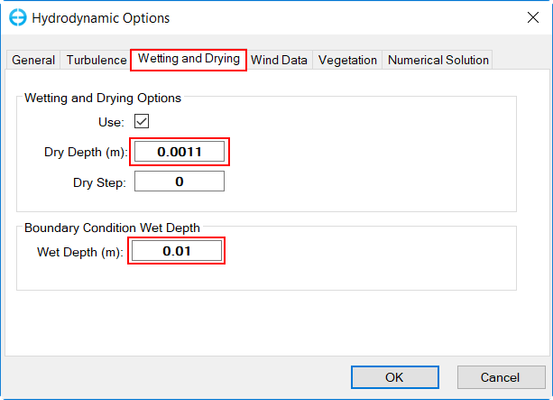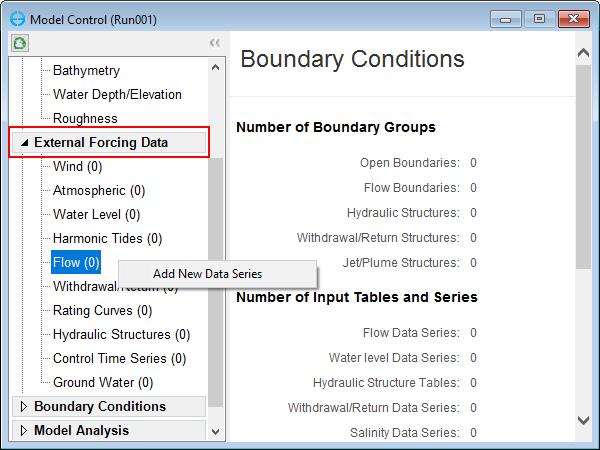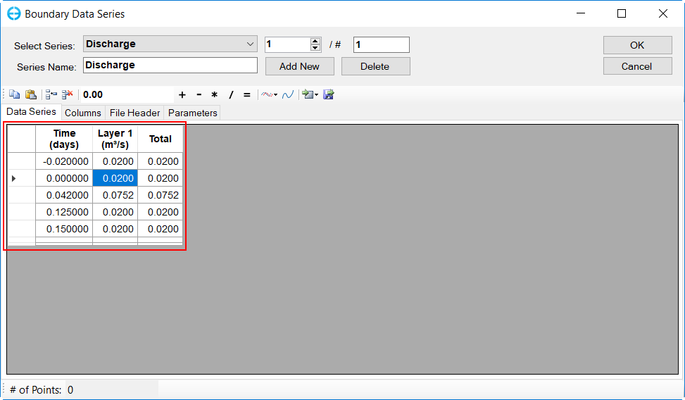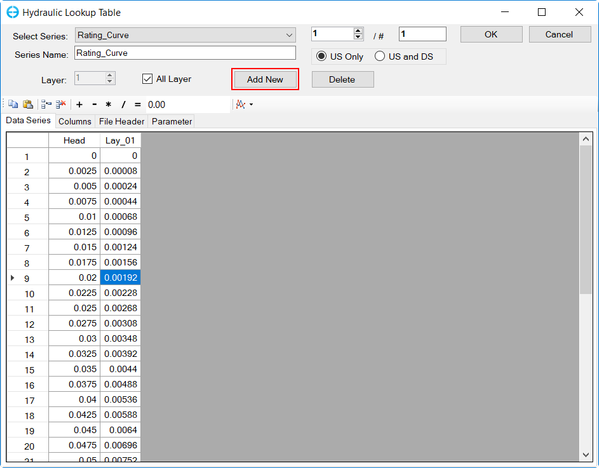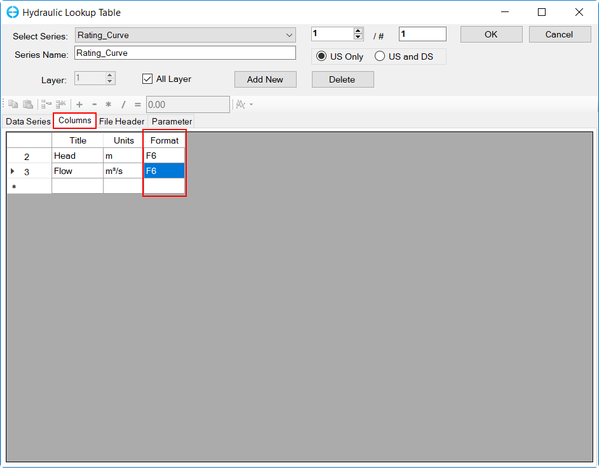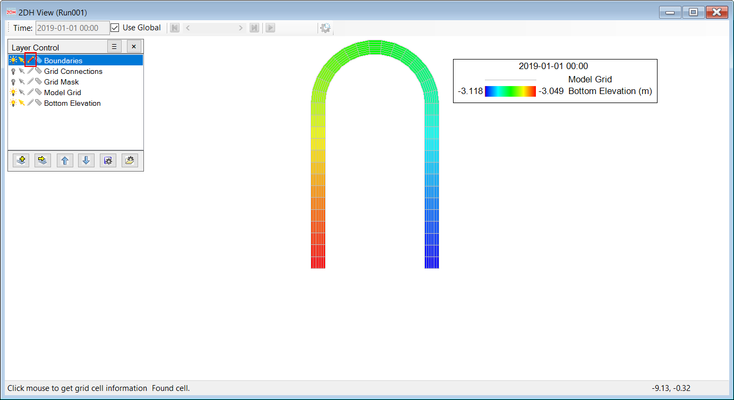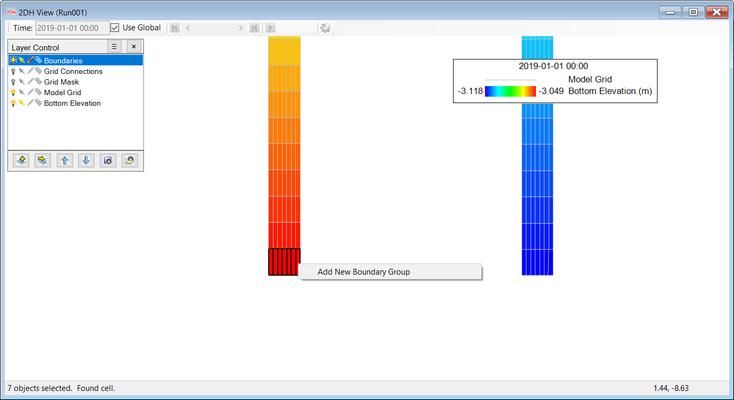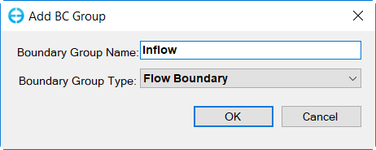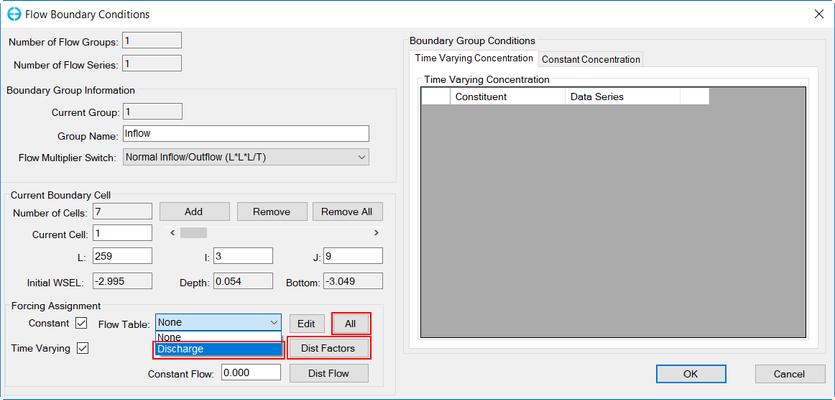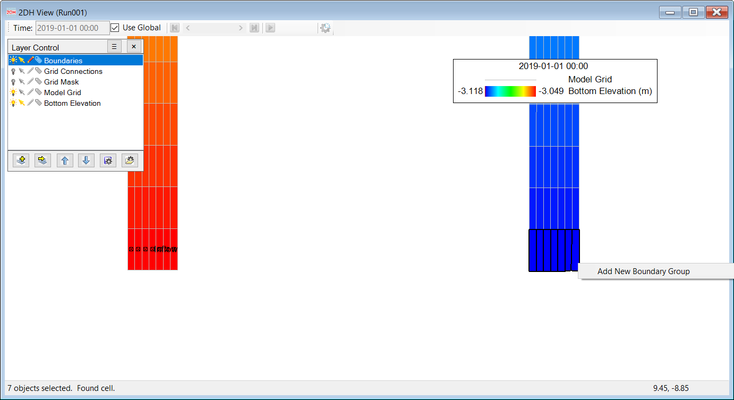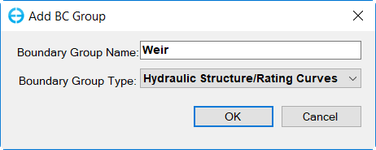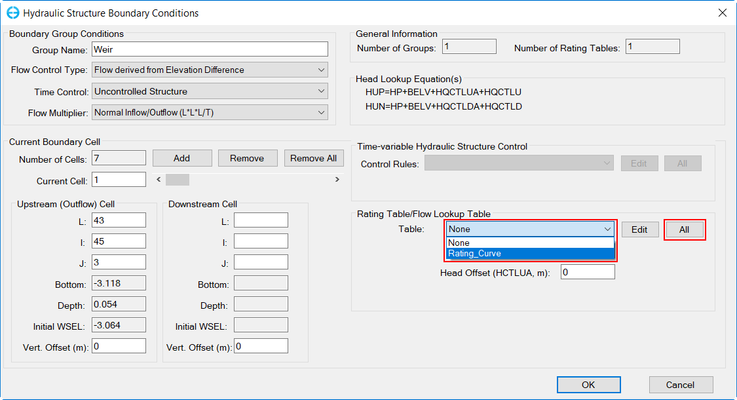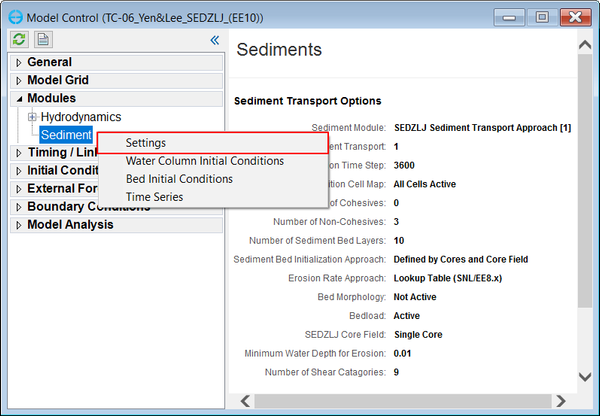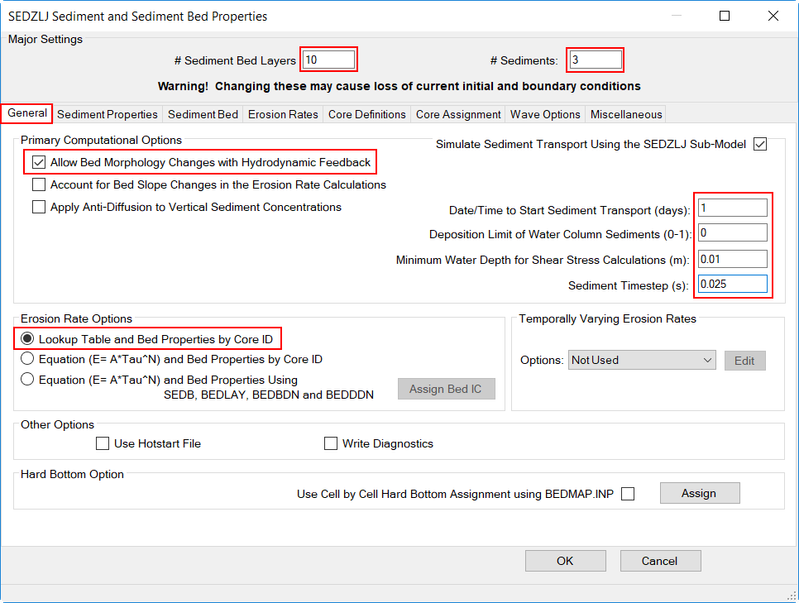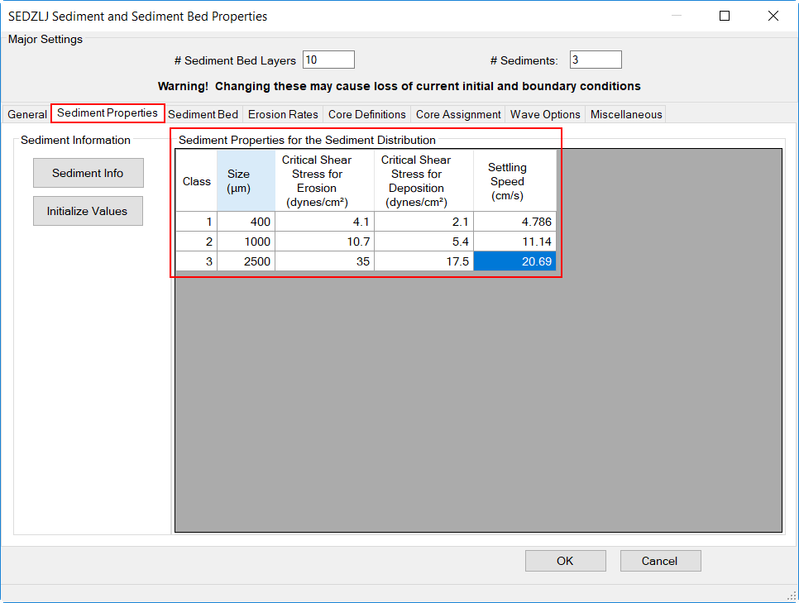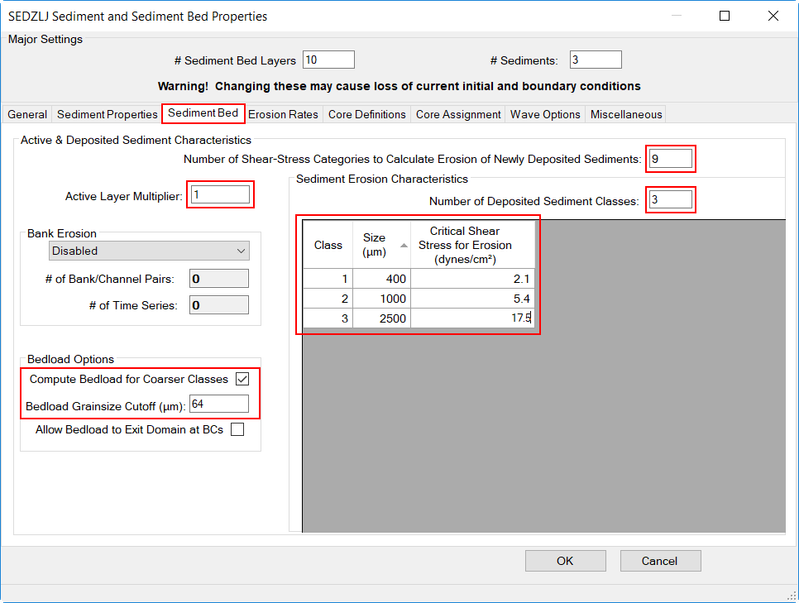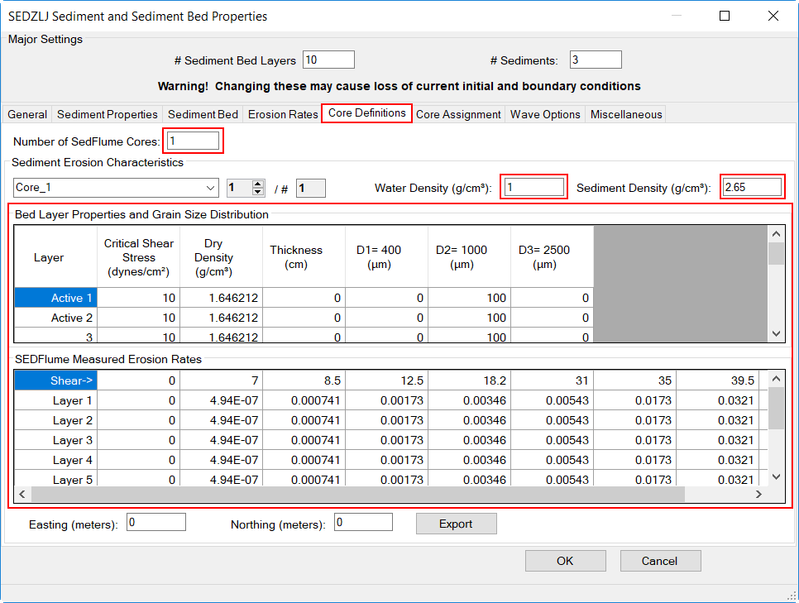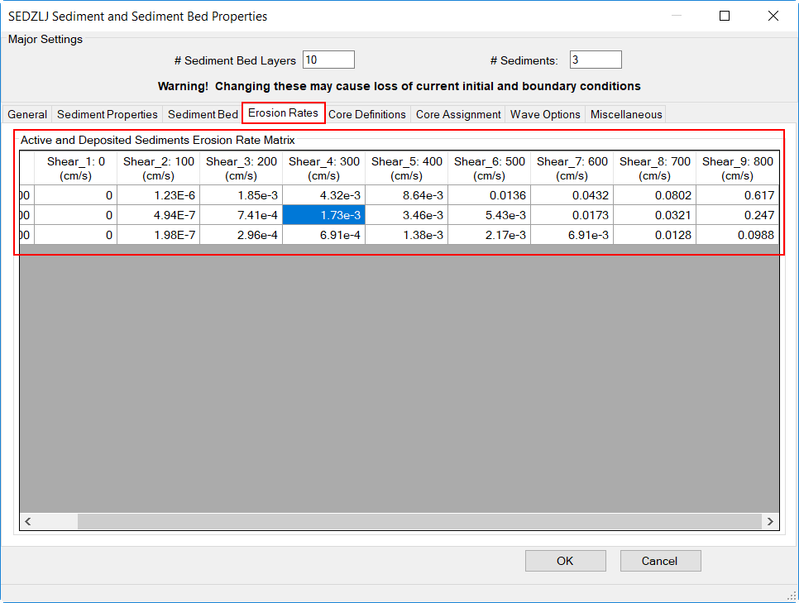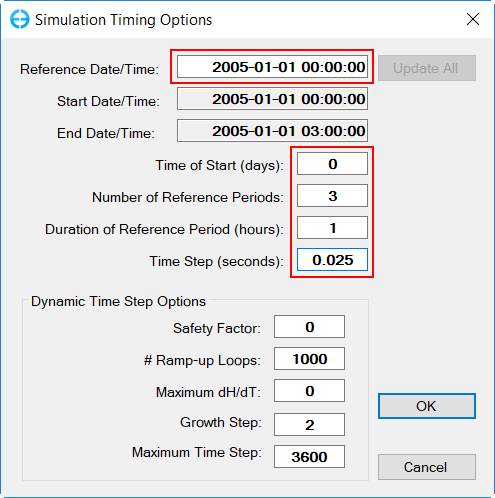1. Introduction
This tutorial provides guidance on how to set up an EFDC SEDZLJ sediment model of the Yen & Lee experiment which measured bed topography and sediment sorting in a channel bend subject to unsteady flow conditions. This model is available for download from the EEMS website and some input files from are needed from this to follow this guidance.
To summarize the Yen & Lee experiment, 20 cm of non-cohesive sand with known size gradation were placed in a laboratory channel bend with 11.5-m entrance and exit lengths, a central angle of 180° degrees, an inner radius of 4 m, and a channel width of 1 m. The channel was adjusted to a slope of 0.002 parallel to the center line (the inlet is higher than the bend, which is higher than the outlet.) The base flow was 0.02 m3/s (corresponding to a water depth of h0 = 5.44 cm) and increased linearly to a different peak value for each run (i.e., run 1-run 5, where peak flow rates decreased with increasing run number) and then returned linearly to the base flow (Yen&Lee 1995).
Figure 1. Yen&Lee Experiment Run 1 results.
This model example is based on the Yen & Lee experiment and is constructed in EE10 using the state-of the-art sediment transport sub-model SEDZLJ developed by Sandia National Laboratories which has been incorporated to EEMS
2. Importing Grid
1. Open EE
2. Click New Model icon: on the main menu of the EE interface. The Grid Tool frame appears shown in Figure 2 (below).
3. In Grid Tool, select Import Grid from Files and the Import Grid button will become available. After clicking on Import Grid, a new form appear (Figure 3). The user should choose the Grid Type according to the data files (RGF Grid or CVL Grid) and then click on Browse to browse to the "EFDC_Grid" data file (available from the EEMS website)
Figure 2 Generate EFDC Model and Import Grid Form.
Figure 3 Browsing for grid file.
4. Click OK button to finish grid creation.
Figure 4 Created grid.
5. Save the model by selecting this button and create a new directory
3. Assigning the Initial Conditions
3.1 Assigning the initial bottom conditions
1. To assign the bathymetry and channel slope, first open the plan view by Click on 2DH View in the main control
2. In Layer Control, select the Edit icon under Bottom Elevation
Figure 5 Edit bottom elevation.
3. In the main control, click on Grid Cell Tools to open a drop-down list, then select Set IJ Slopes
Figure 6 Grid Cell Tools.
3. The Assign Slope form should appear, the user input Start Value and I Slope as in Figure 7 then click OK
Figure 7 Assign Slope Value
Figure 8 Channel Slope View
3.2 Assigning the Depth/Water Surface Elevations
1. To assign Depth/Water Surface Elevations, go to Initial Conditions tab under Model Control and RMC on Water Depth/ Elevations
2. A new Water Depth/ Surface Elevations form appear, the user select Assign Depth. The window in Figure 9 will pop up.
Figure 9 Assigning Water Depth.
3. Select Constant and enter the value 0.054. click to the Apply Defined Conditions button to make your changes take effect before selecting the OK button.
4. Go to Modules tab under Model Control and RMC on Hydrodynamic, the Hydrodynamic Options window should appear
5. Select Wetting and Drying tab, change the value for Wet Depth to 0.01 and the value of Dry Depth to 0.0011 (dry depth must always smaller than wet depth and larger than minimum depth)
Figure 10 Change Dry Depth and Wet Depth.
4. Assigning the Boundary Conditions
This section will guide you how to prepare for the boundary conditions and assign it to the model cell configuration. In this example, there are two flow boundaries; one is the discharge from the upstream of the bend and the other is a weir (Hydraulic Structure) at the end downstream. Thus, we should prepare a time series of inflow and a H-Q relationship table for this particular case. In order to set a boundary time series the following steps should be taken as;
4.1 Preparing the Flow Boundary.
1. Select the External Forcing Data tab. ( Figure 10 )
2. RMC on Flow button and select Add New Data Series to edit the flow boundary.
3. Enter the Number of Series into the box. There are only 1 flow boundary so it should be “1”.
4. Give a Title for associated time series.
Figure 11 Assigning Flow Boundary Conditions.
5. The user input data series as in Figure 12
Figure 12 Entering the Boundary Time Series
6. Click the View Series button to view the current time series. Click OK to finish
4.2 Preparing the Rating Curve Boundary.
- Click to the Rating Edit button as shown in Figure 11
- Entering the Number of Series into the box (in this case, enter 1) and give a Tittle for associated time series.
- Copy and Paste the time series data into the workspace as shown in Figure 12
- Click the Current button to see the rating curve as shown in Figure 13
1. Still in External Forcing Data tab, RMC on Rating Curves button and select Add New Data Series to edit the rating curve boundary.
2. Select Add New to create 1 data series and give a Tittle for associated time series.
3. Copy and Paste the time series data into the work-space as shown in Figure 12
Figure 13 Editing the Rating Curve Time Series
If the pasted data appear to be rounded up or down in EE, the user can go into Columns tab and change the Format to F6
Figure 14 Changing format for data series
4. Click the View Series button to view the current time series. Click OK to finish
Figure 15 Plot of Rating Curve.
4.3 Assigning Time Series to the Boundary Location Cells.
When all required boundary time series are prepared. Users have to assign those boundary time series into the model cells.
4.3.1 Assigning flow boundary
In order to assign the flow boundary, the following steps should be taken
1. Click the 2DH View icon on the main form of EE
2. Choose Boundaries in the Viewing Layer Control
3. Enable Edit grid by turn on icon
Figure 16 Edit boundary condition
4. Hold "SHIFT" and LMC to select all the upstream cell
5. Right mouse-click and select Add New Boundary Group
Figure 17 Assign Upstream Boundary Condition to Cells.
6. Enter the Boundary Group Name: Inflow group (Figure 17).
7. Select Boundary Group Type. It is dependent on your current boundary type to choose the suitable boundary type. In this case, choose Flow Boundary and click OK
Figure 18 Enter Boundary Group ID and Type.
8. In the new Flow Boundary Conditions form, select the flow table associated with this inflow boundary time series from the Flow table drop-down list
9. Select All to apply to all selected boundary cells. Click on Dist Factor to distribute flow to all boundary cells.
10. Click OK to finish
Figure 19 Assign the corresponding time series.
4.3.2 Assigning Hydraulic Structure boundary
1. Still in 2DH View with Edit Boundary selected, hold "SHIFT" and LMC to select all the downstream cell and RMC to select Add New Boundary Group
Figure 20 Assign Downstream Boundary Condition to Cells.
2. Enter the Boundary Group Name: Weir
3. Select Boundary Group Type: Hydraulic Structure/ Rating Curve and click OK
Figure 21 Enter Downstream Boundary Group ID and Type.
4. In the new Hydraulic Structure Boundary Conditions form, select the rating curve data series from the Rating Table drop-down list
5. Select All to apply to all selected boundary cells
6. Click OK to finish
Figure 22 Hydraulic Structure Boundary Conditions.
5. Generate a SEDZLJ Sediment Transport Model
Now the hydrodynamic model has been set. The users should add the sediment transport to this model as described in the Yen & Lee experiment.
1. In Model Control, RMC on Modules to open the EFDC Modules window (Figure 23)
2. The user click on (SEDZLJ) Sediments to activate SEDZLJ sediment transport model
Figure 23 Active Sediments Module.
3. Click OK to finish and a new Sediment tab will appear under Modules
4. RMC on Sediment tab and select Settings
Figure 24 Modify Sediments Setting.
5. SEDZLJ Sediment and Sediment Bed Properties window will appear. Set up General tab as Figure 25
In this section, we use "Lookup Table and Bed Properties be Core ID" .For other options, go to LINK
Figure 25 General setting of Sediment and Sediment Bed Properties.
6. Set up the Sediment Properties tab as Figure 26
Figure 26 Setting Sediment Properties.
7. Set up the Sediment Bed tab as Figure 27.
Figure 27 Setting Sediment Bed.
8.Set up Core Definitions tab as Figure 28
Figure 28 Setting Core Definitions.
9. Set up the Erosion Rates tab as Figure 29.
Figure 29 Setting Erosion Rates.
10.The remaining Core Assignment, Wave Options, Miscellaneous tabs does not require changes and should be ignored by the user. Click OK to finish and close the window.
6. Model Timing
Under Model Control, select Timing/ Linkage tab and RMC on Timing to open Simulation Timing Options (Figure 30)
Enter Duration of starting/ ending the simulation. Note that the boundaries time series should be always covered this simulation duration period. Otherwise, the model will not run
Figure 30 Model Run Timing.
7. Running EFDC
- Click Save Project button on the top of EE form to save the model again
- Click Run EFDC button to run the model as shown in Figure 31
- Figure 32 shows EFDC+ running window.
Figure 31 Save and Run Model.
Figure 32 EFDC Sediment Model Running Window.
![]() Note that you can press any characters on the keyboard to pause the simulation and check the model results. If you want to exit the simulation press the same key again if you want to continue the run then press any other key.
Note that you can press any characters on the keyboard to pause the simulation and check the model results. If you want to exit the simulation press the same key again if you want to continue the run then press any other key.
